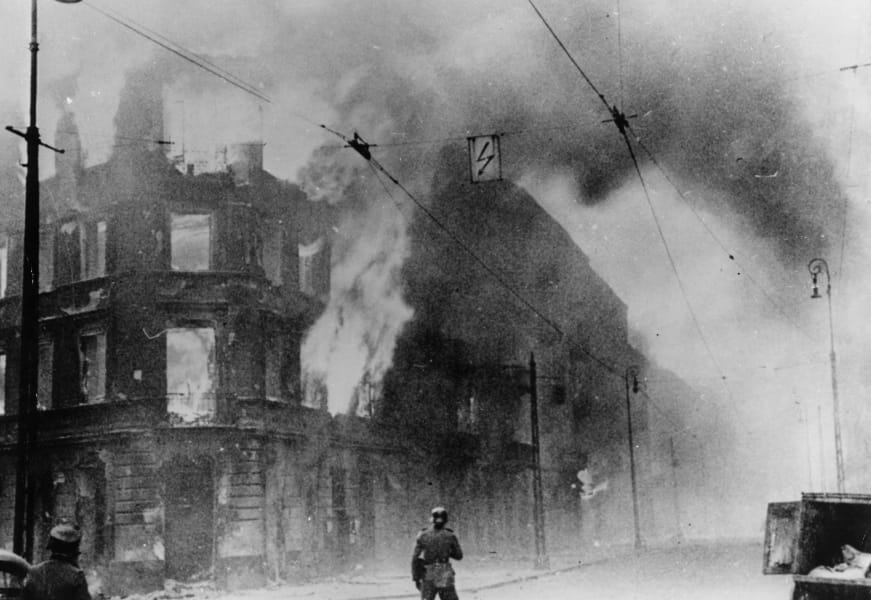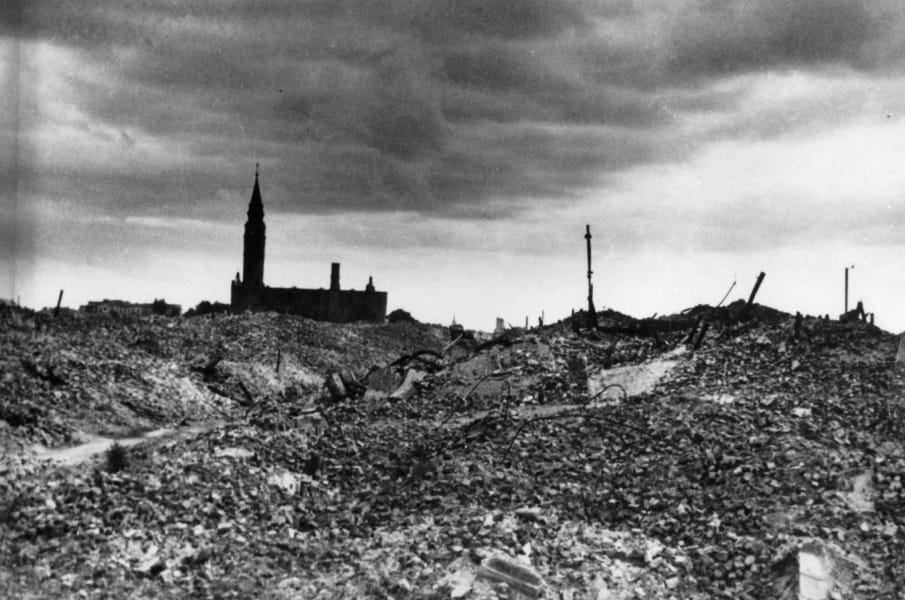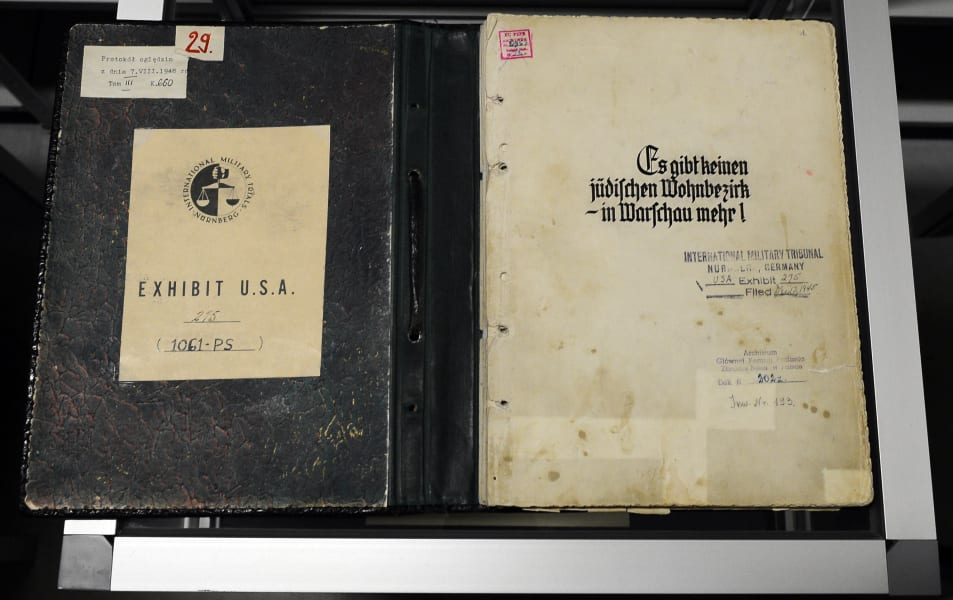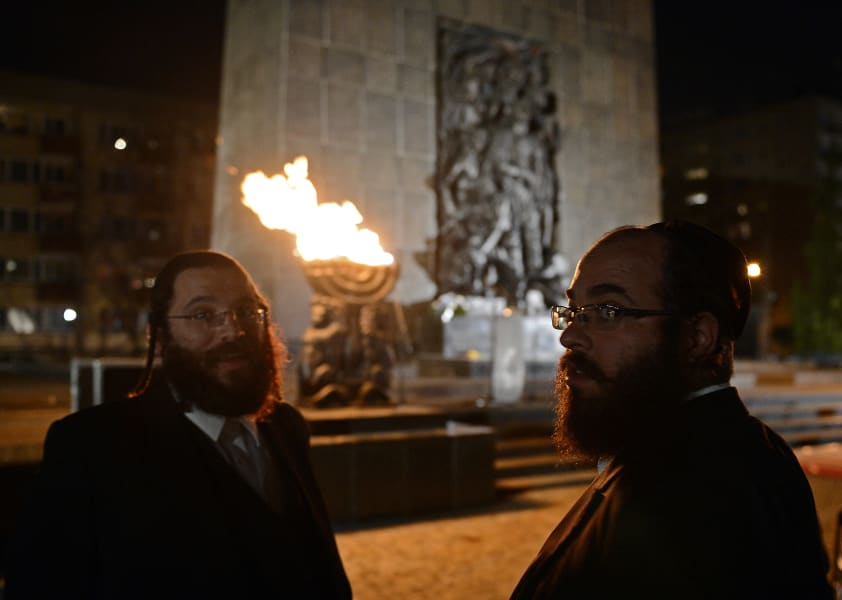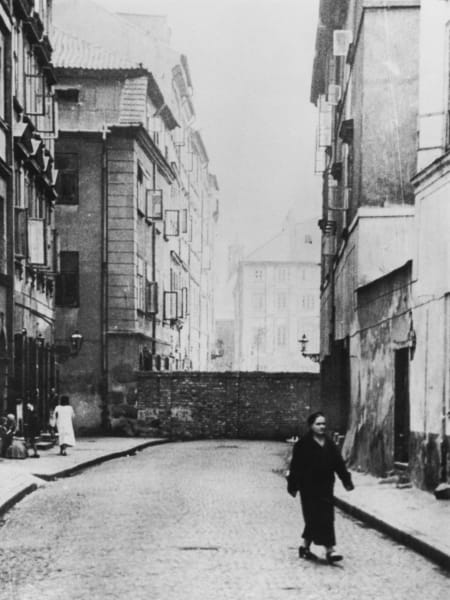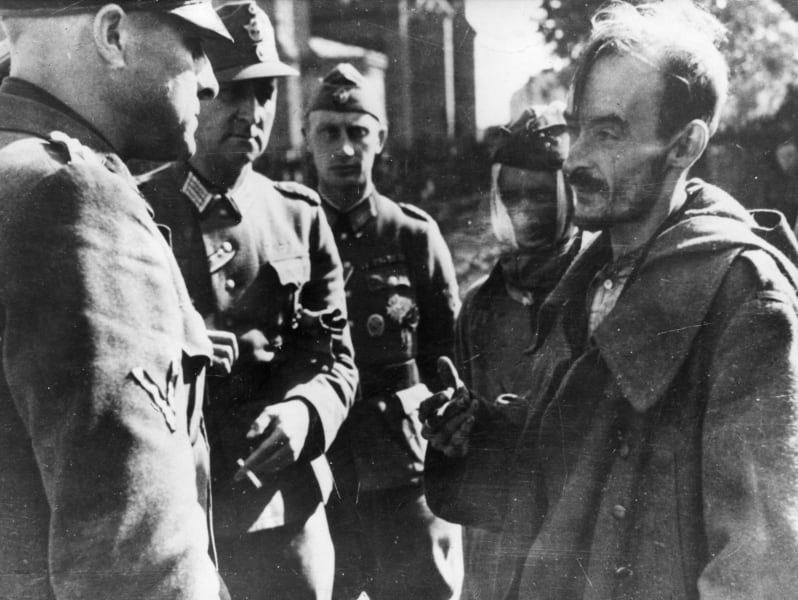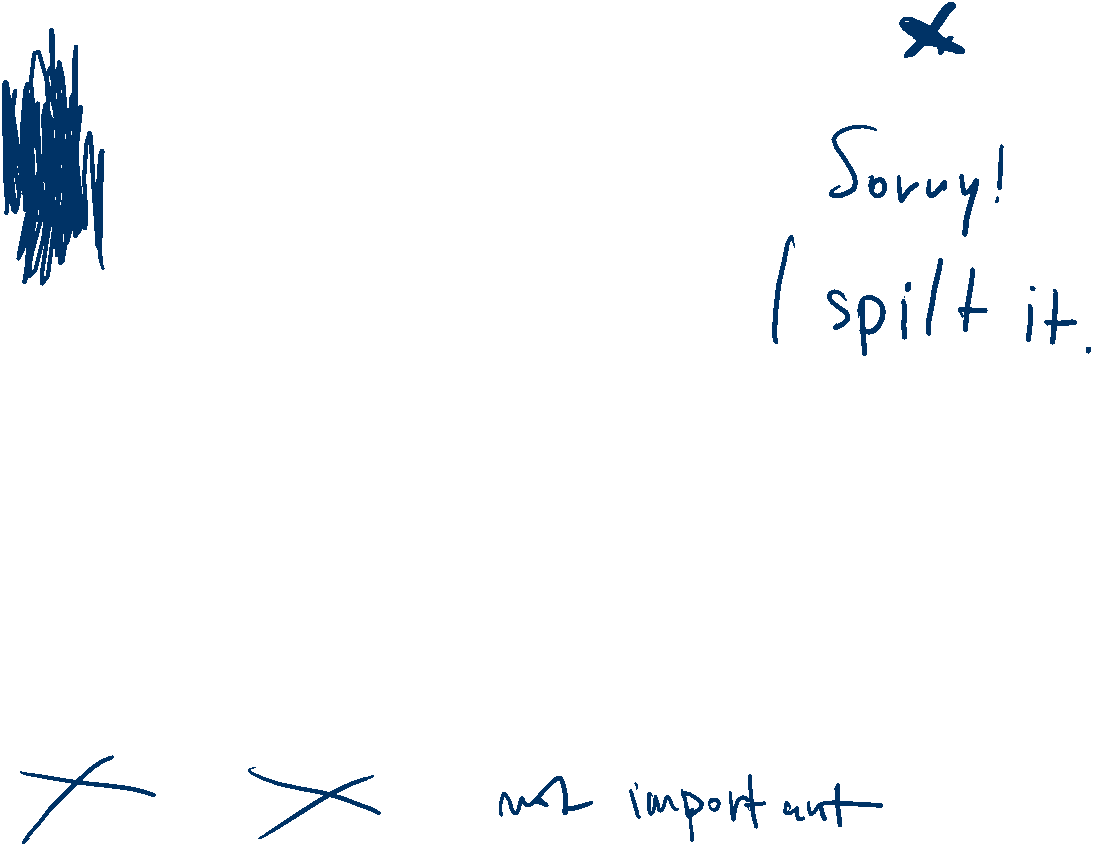Share
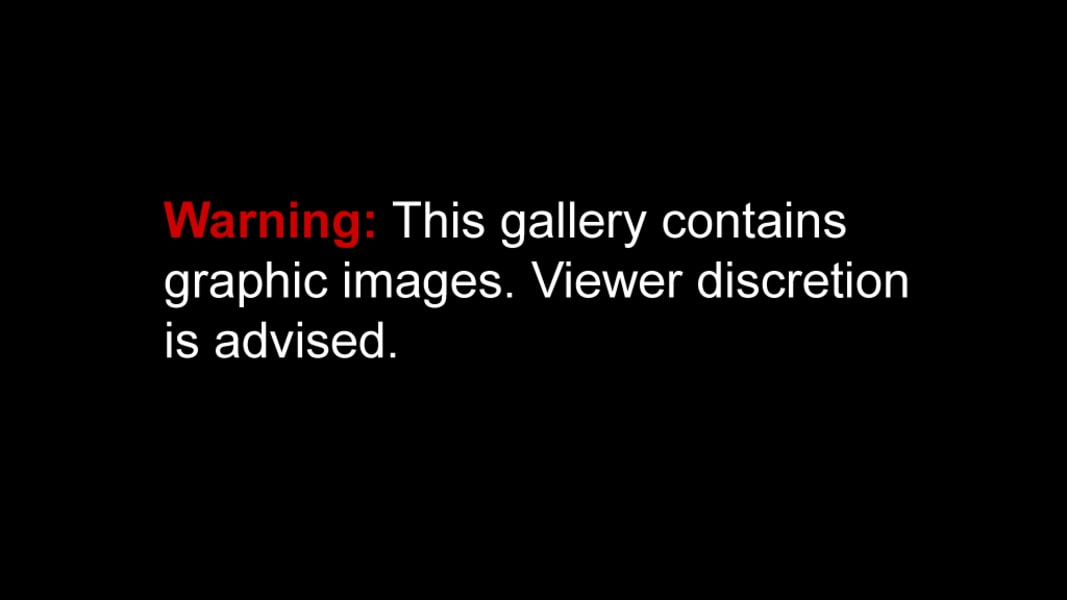

1 of 16
On May 16, 1943 the Nazis completed their mission to liquidate the Jewish ghetto in Warsaw. To mark the 70th anniversary of the uprising, people gathered in front of the monument to the fighters of the ghetto for an evening of commemorations on April 18, 2013. Flip through these archive images and see what life in the ghetto was like. JANEK SKARZYNSKI/AFP/Getty Images
The ghetto was established in late 1941. Sealed with walls separating the area from the rest of Warsaw, it enclosed a population of about 400,000 people. This photo shows part of the 3-meter wall bordering the ghetto. Fox Photos/Hulton Archive/Getty Images
Children ride on a "Jewish-only" tram in Warsaw'. This photo was taken circa in 1940, before the ghetto was officially established. However, strict rules for Jewish people in Warsaw were already in place in 1940. Keystone/Getty Images
A street vendor in Warsaw ghetto sells yellow armbands featuring the star of David, which had to be worn visibly by all Jews in Warsaw at all times. Three Lions/Getty Images
With almost half-a-million people living within 3.4 square kilometers (1.3 sq miles), the ghetto was extremely overcrowded. This picture from 1943 shows a family house in the ghetto. AFP/Getty Images
With the walls cutting the ghetto off from essential supplies, many people were left starving. This picture shows a scene from a street in the ghetto in circa 1941. Hulton Archive/Getty Images
The conditions in the overcrowded ghetto caused thousands of deaths. In this picture from 1942, a man carries away bodies of people who died of hunger in the streets. -/AFP/Getty Images
By 1942, the Nazis were deporting masses of people to the Treblinka extermination camp to the east of Warsaw, the Polish capital. In this picture, dated from 1943, people from the Warsaw ghetto surrender to German soldiers. Keystone/Getty Images
During April 1943 the first urban mass rebellion against the Nazi occupation of Europe started in the Warsaw ghetto. Pictured here are insurgents fighting in the streets of Warsaw during the uprising. HO/AFP/Getty Images
The revolt was crushed by German troops under the command of SS-Gruppenfuehrer Juergen Stroop during April and May 1943. Here German soldiers question prisoners after the uprising. OFF/AFP/Getty Images
Poorly armed civilians were soon defeated by the Nazis. Pictured are captured Jewish civilians who participated in the uprising. Most of those arrested by Germans were murdered or transported into concentration camps. Frederic Lewis/Getty Images
Only a handful of fighters survived the uprising.Pictured here is a Polish prisoner of war (right) being interrogated by German officers in Warsaw. Keystone/Getty Images
The uprising finally ended on May 16, 1943, when the Nazi soldiers set the district on fire and razed the ghetto to the ground. Keystone/Getty Images
Only ruins and rubble remained from the central Warsaw district after the Nazis completed their plans. Symbolically, the Great Synagogue of Warsaw was demolished last. Keystone/Getty Images
After crushing the revolt, German commander Juergen Stroop wrote a report detailing the military action. One of the three original copies of this report is on display in Warsaw's Institute of National Remembrance. Stroop was tried and executed in Warsaw in 1951. JANEK SKARZYNSKI/AFP/Getty Images
